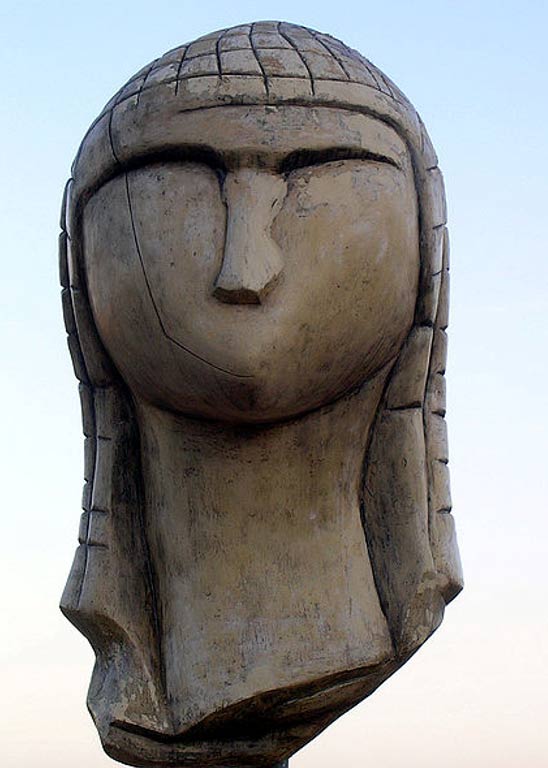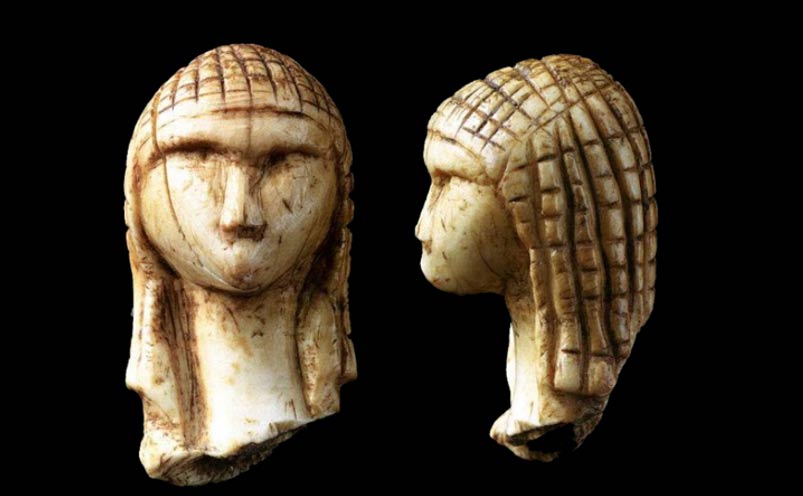Timeless Beauty of the 25,000-Year-Old Venus of Brassempouy
About 25,000 years ago an Upper Paleolithic artist took up a piece of ivory and lovingly carved the details of a woman’s coiffed hair or headdress, gracefully curved chin, intense eyes, and carefully defined nose. Little did the artist know, the head of the figurine would eventually become one of the earliest known representations of a human face. Today, the fragmented figurine is called the Venus of Brassempouy.
It is a piece of a prehistoric figurine that was discovered in France. An alternative name for the Upper Paleolithic artwork is ‘La Dame de Brassempouy’, which means ‘the Lady of Brassempouy. The Venus of Brassempouy is a type of statuette referred to as ‘Venus figurines’. This term (now considered to be controversial as well as inappropriate) was coined during the 19th century, as their physical features, which may be interpreted as signs of fertility, have led to their association with Venus, the Roman goddess of love.

A medallion painting from the House of Marcus Fabius Rufus in Pompeii, Italy, executed in the Second Style and depicting the Greco-Roman goddess Venus-Aphrodite wearing a diadem and holding a scepter; it is dated to the 1st century BC. (Public Domain)
These figurines may be made of a variety of materials including ivory, clay, and bone, and have been dated to the Upper Paleolithic period. A present, about 200 of them are known to exist. Whilst most Venus figurines were discovered in Europe, some have been unearthed as far east as Siberia. Generally speaking, these objects are small statuettes depicting voluptuous female figures, often with exaggerated breasts, abdomen, hips, and thighs. Often, they have a stylized head, most of the time disproportionately small, and lacking in detail. This is a feature that separates the Venus of Brassempouy from others.
- Another Venus? Rare Neolithic Female Figurine Discovered in Turkey
- Unique 5,000 Year Old Figurine with Feather Headdress Found in Old Potato Field
- The Venus Figurines of the European Paleolithic Era
Discovering the Venus of Brassempouy
The Venus of Brassempouy was discovered in 1892 by Édouard Piette, a French archaeologist and prehistorian. The figurine was found in the Grotte du Pape (meaning ‘The Pope’s Cave’), one of two caves located near the village of Brassempouy in the southwestern French department of Landes. The Venus of Brassempouy was carved out of mammoth ivory and has been dated to around 23,000 BC. The Venus of Brassempouy, which measures around 3.5 cm (1.38 inches), is a fragmentary figurine, as only its head was discovered. It is assumed that the rest of the figurine had been destroyed sometime in the past. Nevertheless, this fragment is quite significant, as it is one of the earliest known representations of a human face.

Venus of Brassempouy. (Public Domain)
As mentioned earlier, the heads of other Venus figurines are normally stylized, and are often devoid of details. The Venus of Brassempouy, on the other hand, has clear facial features, as seen in its forehead and brows which were carved in relief. The figurine lacks a mouth.
This figurine is also notable for the incisions made on the top and sides of the head, which may be a representation either of hair, or a headdress that resembles those worn by the ancient Egyptians. Due to this feature, the Venus of Brassempouy sometimes known also as ‘La Dame à la Capuche’, which means ‘the Lady with the Hood’.
What was the Purpose of this Figurine?
Like other Venus figurines, the function of the Venus of Brassempouy is a matter of debate. Venus figurines have been commonly interpreted to have served as fertility symbols or religious objects. Others have suggested that they may have been used as dolls, representations of ideal standards of beauty during the Upper Paleolithic, portraits, prehistoric pornography, or perhaps a combination of various functions.
- The Ideal Woman’s Body – a Gift of the Gods?
- 23,000-year-old statuette found in France adds to mysterious collection of 'Venus figurines'
- World Famous Ancient Siberian Venus Figurines are NOT Venuses After All

Venus of Galgenberg - made of green serpentine 30,000 years ago. (Aiwok/CC BY SA 3.0)
Given the attention to detail that was made by the carver of the Venus of Brassempouy, it has been suggested that this figurine may have been a portrait of someone. It has also been suggested that directly representing human figures may have been a taboo during the Upper Paleolithic, as there is a scarcity of detailed human images in cave paintings. Nevertheless, the portrayal of humans may have existed in ‘portable arts’, which Venus figurines may be categorized under. Thus, the Venus of Brassempouy may be taken as evidence of this.

A reproduction of the Venus of Brassempouy. (Jibi44/CC BY SA 3.0)
Today, the Venus of Brassempouy is kept in the Musée d'Archéologie Nationale at Saint-Germain-en-Laye, not far from Paris. This precious figurine, however, is not on permanent display, as, being made of ivory, it is highly susceptible to changes in moisture, temperature, and light.
Top image: The Venus of Brassempouy. Source: Public Domain
By Ḏḥwty
References
Bradshaw Foundation, 2015. The Brassempouy portrait. [Online]
Available at: http://www.bradshawfoundation.com/news/index.php?id=The-Brassempouy-portrait
Dowson, T., 2018. Venus of Brassempouy. [Online]
Available at: https://archaeology-travel.com/friday-find/venus-of-brassempouy/
Föll, H., 2018. Venus Figurines. [Online]
Available at: https://www.tf.uni-kiel.de/matwis/amat/iss/kap_2/advanced/h2_1_1.html
Holloway, A., 2014. The Venus Figurines of the European Paleolithic Era. [Online]
Available at: http://www.ancient-origins.net/ancient-places-europe/venus-figurines-european-paleolithic-era-001548
Jeremy Norman & Co., Inc., 2018. One of the Earliest Known Realistic Representations of a Human Face (Circa 23,000 BCE). [Online]
Available at: http://www.historyofinformation.com/expanded.php?id=2492
visual-arts-cork.com, 2018. Venus of Brassempouy. [Online]
Available at: http://www.visual-arts-cork.com/prehistoric/venus-of-brassempouy.htm




















Comments
Looking at the brow ridge it could be a mix of homo sapien and Neanderthal
I see the pouty lips of Bardot.